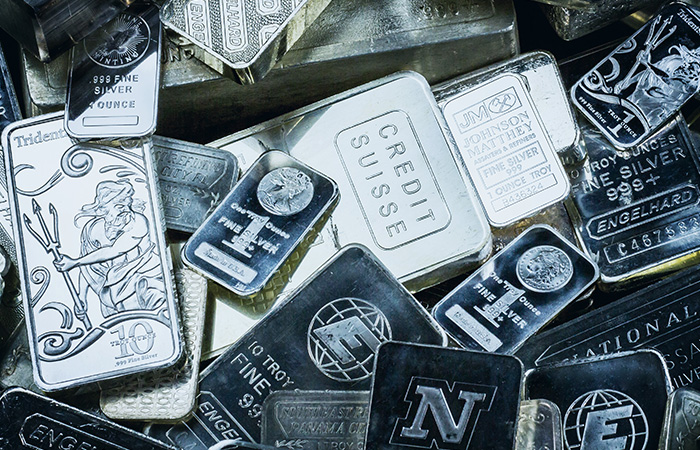Silver Bullion Prices Last Year

Silver bullion is a valuable asset class that has seen dramatic shifts in price throughout the past year. 2019 was no exception, as prices experienced both highs and lows over the course of the year.
In this article, we will analyze silver bullion performance during 2019, detailing factors that influenced its price movements and making predictions for 2020 silver bullion prices. We will also examine how silver bullion fared relative to other investment assets during the same time period.
With all these considerations taken into account, readers should gain a comprehensive understanding of silver bullion performance in 2019 and be better prepared to make informed decisions regarding investments in 2020.
Overview of 2019 Silver Bullion Prices
Analyzing the 2019 market for precious metals, investors experienced both highs and lows.
Silver bullion prices began the year at a stable spot price of around $15.50 per troy ounce, then quickly rose to $17 in February before leveling off until the summer months when they hit an all-time high of nearly $19 per troy ounce in September.
The price then settled back into a steady range between $16 and $17 per troy ounce for the rest of 2019.
The significant peaks and valleys seen throughout the year can be attributed to several factors such as political uncertainty, central bank purchases, and strong investor demand for safe-haven assets.
With silver experiencing one of its strongest years on record, it is clear that this precious metal is still viewed as a valuable asset to many investors looking to hedge their portfolios against potential risks.
Silver Bullion Price Peaks in April
April saw a highpoint in the precious metal’s value, with its peak resembling a pinnacle. It was during this period that silver bullion prices experienced their greatest increase compared to other months of 2019.
The highest price point of 2019 for silver bullion occurred during April, with the spot price reaching $16.22 per ounce on April 9th. Throughout the month of April, many investors took advantage of the increased value and purchased silver as an investment vehicle.
Silver bullion prices began to decline after April 9th, but remained above $15 per ounce throughout much of May and June. This contrasted with early in 2019 when silver had dropped to under $14 per ounce by mid-February; however, these lower values did not last long due to increasing investor demand and speculation about global economic conditions.
Overall, it was clear that April provided an ideal environment for those looking to invest in silver bullion as they were able to take advantage of higher prices before they decreased again towards the end of the year.
Factors Influencing Silver Bullion Prices
Comparing the beginning of 2019 to April of the same year, it is evident that several factors influenced silver bullion values over the course of the year.
One major factor was changes in global markets and economies, as these developments can influence investors’ confidence when purchasing precious metals. Global political events such as Brexit or trade wars between countries may cause investors to view silver bullion prices differently, which can then affect the short-term performance of silver bullion prices.
Additionally, demand for physical silver coins and bars affects market pricing. Investment grade silver is typically more expensive than industrial grade products, so a high demand for investment grade products will cause prices to increase while a decrease in demand could lead to lower prices.
The second major factor influencing silver bullion prices is supply; specifically refining capacity and new mine production. When there is an increased supply of newly refined product on the market it can suppress prices while a shortage or limitation in refining capacity can lead to higher prices due to reduced supply. In addition, if new mine production increases significantly this could also add additional pressure on existing supplies leading to downward pressure on pricing.
Lastly, fluctuations in currency exchange rates also have an impact on how much buyers are willing to pay for certain types of silver bullion products versus other currencies which could be traded instead.
Analyzing Silver Bullion Performance in 2019
Examining the performance of precious metals in 2019 offers insight into how global markets and economies have impacted the value of silver bullion. The year saw a mixed performance for the metal, with prices increasing significantly in some months while dropping drastically at other times.
On a month-by-month basis, silver bullion performed as follows:
- Positive Performance
- January: +4.2%
- March: +8.3%
- Negative Performance
- August: -7.6%
- September: -9.9%
The volatility of silver bullion prices was largely driven by macroeconomic forces such as changes in U.S.-China trade relations, economic growth forecasts around the world, and shifts in investor sentiment towards safe haven assets like gold and silver.
Analyzing monthly price movements can help investors identify which events had an impact on prices and make better decisions when investing in precious metals like silver bullion.
Predictions for 2020 Silver Bullion Prices
The upcoming year promises to be an exciting one for investors in precious metals, with silver bullion poised to deliver potential gains or losses depending on the direction of global markets. Investors can prepare for 2020 by studying the performance of silver bullion prices in 2019 and comparing it to other notable investments. To better understand how silver bullion performed last year, a table has been generated below that outlines the prices of some major investments at different points throughout 2019:
| Investment Type | End of Jan. | End of July | End of Dec. |
|---|---|---|---|
| Silver Bullion | $15.82/oz | $16.01/oz | $18.25/oz |
| Gold Bullion | $1294/oz | $1420/oz | $1528/oz |
| S&P 500 Index | 2563 | 3035 | 3231 |
From this data it is clear that Silver Bullion saw consistent growth throughout the year with a 17% increase from the end of January 2019 and ending at 18.25 per ounce at the end of December 2019; while Gold Bullion increased by 16%, and S&P 500 index rose by 25%. This suggests that investing in silver bullion was more profitable than gold or stocks during this period, making it a viable option for investors who are looking to diversify their portfolios in 2020.
Frequently Asked Questions
What is the difference between silver bullion prices and silver coin prices?
Silver bullion and silver coin prices have significant differences, as the composition of each is slightly different. Silver bullion is a bar or ingot of pure silver, while silver coins are composed of both silver and copper alloy. Silver coins may also contain additional metals such as zinc or nickel for added durability.
The purity of the silver in coins is expressed as a percentage, usually between 90% to 99%. Conversely, the purity of an investment-grade bullion bar should be at least .999 fine, or 99.9% pure.
Additionally, while silver coin prices are determined by their face value in addition to the current market rate for silver, bullion prices fluctuate solely according to the current spot price for precious metals.
Are silver bullion prices affected by the stock market?
Silver bullion prices are affected by the stock market to a certain extent. Bullion prices tend to be influenced by economic conditions, including changes in investor sentiment and the strength of the US dollar.
When the stock market experiences volatility, investors may seek out safe-haven investments such as gold or silver bullion. This increased demand can lead to higher prices for silver bullion as investors purchase it as a hedge against losses in other markets.
Conversely, when the stock market is strong and investors feel confident about their investments, they may reduce their holdings of precious metals such as silver bullion, leading to lower prices for this type of asset.
As a result, it is important for those interested in investing in silver bullion to pay attention to the overall performance of the stock market and other economic indicators that could affect its price over time.
Is it better to invest in silver bullion or paper silver?
Investors may consider whether it is more beneficial to invest in silver bullion or paper silver, as both have advantages and disadvantages.
Silver bullion has the benefit of physical possession, which can increase security and eliminate counterparty risk.
On the other hand, paper silver investments are typically easier to buy and sell, making them a convenient choice for those who wish to quickly exchange their investment for cash.
However, paper silver investments often come with higher fees than physical bullion.
Ultimately, investors must weigh the pros and cons of each option before deciding which form of investment suits their needs best.
Is it possible to buy silver bullion in bulk?
It is possible to buy silver bullion in bulk. Many dealers offer a variety of sizes, allowing buyers to purchase large quantities of bullion at once.
Bulk purchases can be advantageous for investors who wish to maximize their holdings and diversify their portfolios. Silver bullion has traditionally been seen as a hedge against inflation and economic downturns, making it an attractive option for long-term investors seeking stability and security.
As with any investment, however, there are risks involved in buying silver bullion in bulk and it is important to thoroughly research the market before making any decisions.
How can I track silver bullion prices in real time?
Investors keen on tracking silver bullion prices in real time can utilize a variety of online tools. For those looking to make informed decisions and stay ahead of the game, monitoring price movements is essential. Such individuals should be prepared to roll up their sleeves and dig deep, as the task requires dedication and attention to detail.
An idiom used to describe such an endeavor is ‘no stone unturned,’ meaning that all potential sources should be explored for reliable information. With the right combination of data points, investors will be able to track silver bullion prices day-by-day or even hour-by-hour.
Conclusion
In 2019, the overall performance of silver bullion was met with mixed results. The market saw its highest peak in April, however a combination of economic and political factors caused volatility throughout the rest of the year.
It is important to analyze and understand these factors in order to make accurate predictions for 2020. Overall, this rollercoaster ride has taught us that silver bullion prices are like a box of chocolates – you never know what you’re going to get.
Moving forward, it is crucial that investors stay up-to-date on the latest news and trends in order to anticipate changes in bullion pricing. With careful consideration and research, 2020 may bring even more successful investments into silver bullion.






